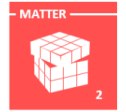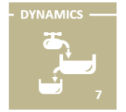Target Values
Target Values can be considered in two different and complementary ways:
- Value Proposition: a way to fulfill the targets' needs
- Products (goods & services): a way to compose the Value Proposition
(click on the following elements for more details)
> Value Proposition
(Target's viewpoint: a way to fulfill needs)
A Value Proposition is a set of products (goods & services) provided by the organization to its targets, to fulfill a need.
The same products can compose two very different Value Proposition, depending on the nature of the business. For instance, the same chemical product can be used for industrial purpose (sold in large quantities for a low price) and for a very specific surgical purpose (sold in small quantities for a high price).
CONTEXT
A Value Proposition may be:
- new or not for the organization,
- unique, relatively unique or widely available in the market,
- similar or differentiated regarding competitors' value propositions,
- in an introduction, growth, maturity or decline phase,
- part of a highly competitive market or not,
- part of a demand-driven or offer-driven market,
- a core value proposition or peripheral value proposition for the organization,
- a ordinary value proposition, an punctual value proposition (ex: divestment), or an "externality" value proposition (not developed on purpose) for the organization,
- fulfilling a need that is in an increasing, stable or decreasing phase,
- part of highly competitive market or not,
- have a low or high market share,
- subject to a make-or-buy decision from the targets,
- a stand-alone offer or complementor of other value propositions from third parties,
- ...
CONTENT
A Value Proposition may consist in:
- a single good, a set of goods, a single service, a set of services, or a set of goods and services,
- raw materials, a component, an end product, a tool, a solution, a platform, a service, an experience or a job done.
CONCEPT
A Value Proposition may:
- be single or multiple,
- be standard or customizable,
- be at the center of an ecosystem or part of an ecosystem,
- fulfill needs of a single or multiple target segments,
- fulfill a single need or various needs for the market,
- fulfill a single need or various needs for each target,
- fulfill needs in the awareness, seeking, consideration, tryout, preference, transaction, use, post-transaction services, repeated transaction, disposal and/or resell steps of a transaction process,
- fulfill needs for the targets in terms of costs, technology, time-to-market, availability, image, features, performance, standards, compatibility, conformance, customization, associated services, quality, reliability, durability, innovativeness, aesthetics, customer relation, expertise, risk transfer, responsiveness, assurance,
- fulfill needs so that the perceived value is uniform or diverse among targets,
- fulfill needs for a short or long period,
- imply a single or multiple transactions,
- involve a low or high switching cost for the targets,
- be distributed via a single or multiple channels,
- ...
> Products
(Organization's viewpoint: a way to compose the Value Proposition)
CONTEXT
Products may be:
- new or not for the organization,
- unique, relatively unique or widely available in the market,
- similar or differentiated regarding competitors' products,
- in an introduction, growth, maturity or decline phase,
- unique for the organization or part of a portfolio,
- mostly driven by the organization's capabilities or by the market,
- ...
CONTENT
Products may:
- be Operational Products (usual goods and services, but also marketing outputs)
- be Divestment Products (long-term assets)
- be Financing Products (securities issued or owned by the organization, or rights associated with securities it acquired1)
- be tangible or intangible,
- be raw materials, intermediate goods, finished goods or services,
- have tangible and/or intangible attributes,
- ...
CONCEPT
Products may:
- be valuable for the organization because of production cost, best fit to value proposition, differentiation, target lock-in, risk mitigation, fit with complementors, image, strategic fit at corporate level,
- be the outcome of minor value added (ex: products from retailers) or major internal value added,
- be unique or exist in several versions,
- be stand-alone or associated with other products from third parties,
- share a small or large core with other products in the organization's portfolio,
- be standard or customizable,
- be durable or nondurable,
- be degraded, unchanged or improved when consumed by the targets,
- need to be replaced or not,
- need maintenance or not,
- ...
Link with Super-Processes:
Products are the outcome of the Market Super-Process.
(see Process Quadrant)

1- Debt and equity securities can be seen as a stock of rights for future cashflows. When the organization is paid by the security issuer (coupons, principal or dividends), it actual resells part of these rights.










